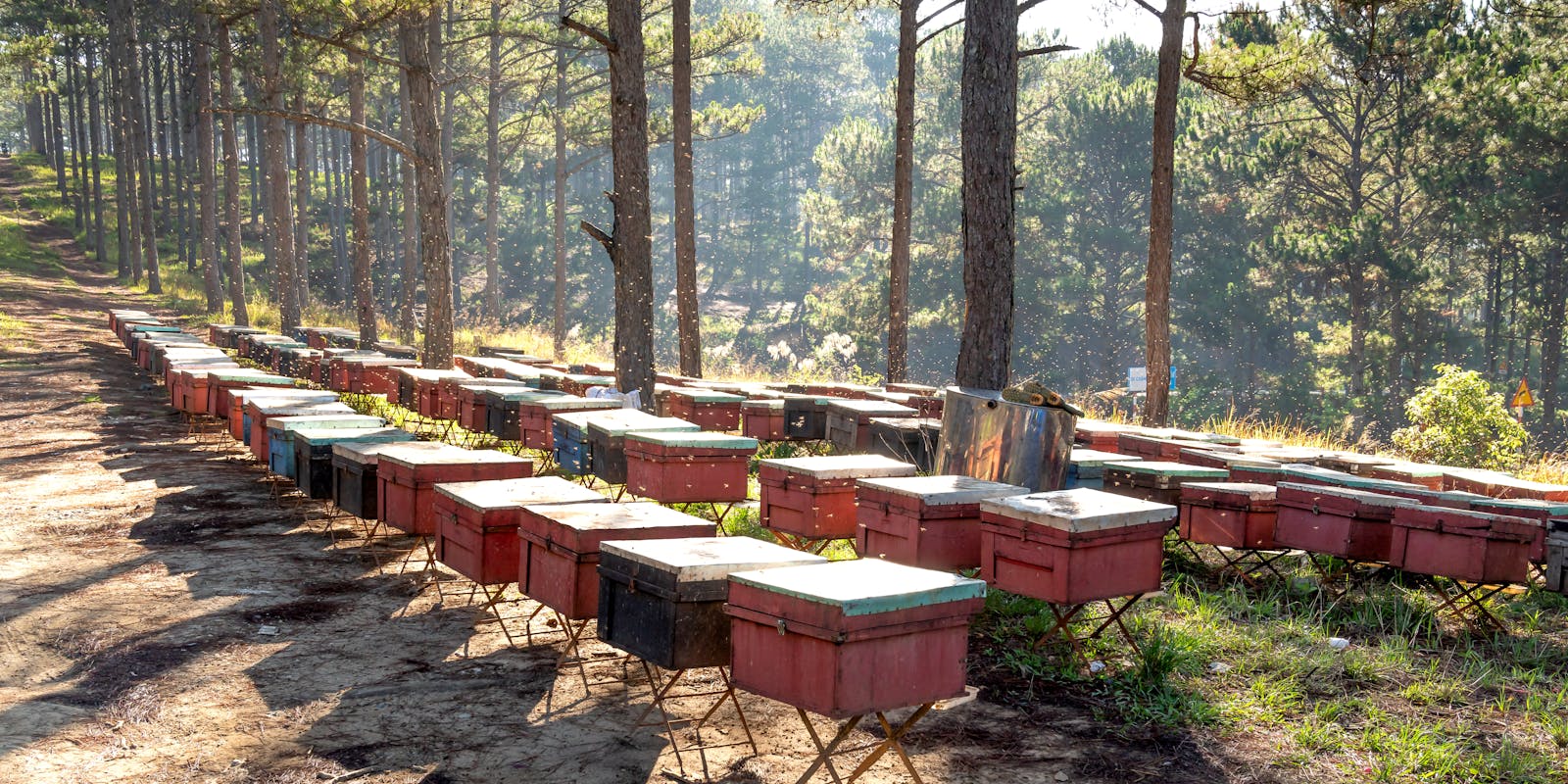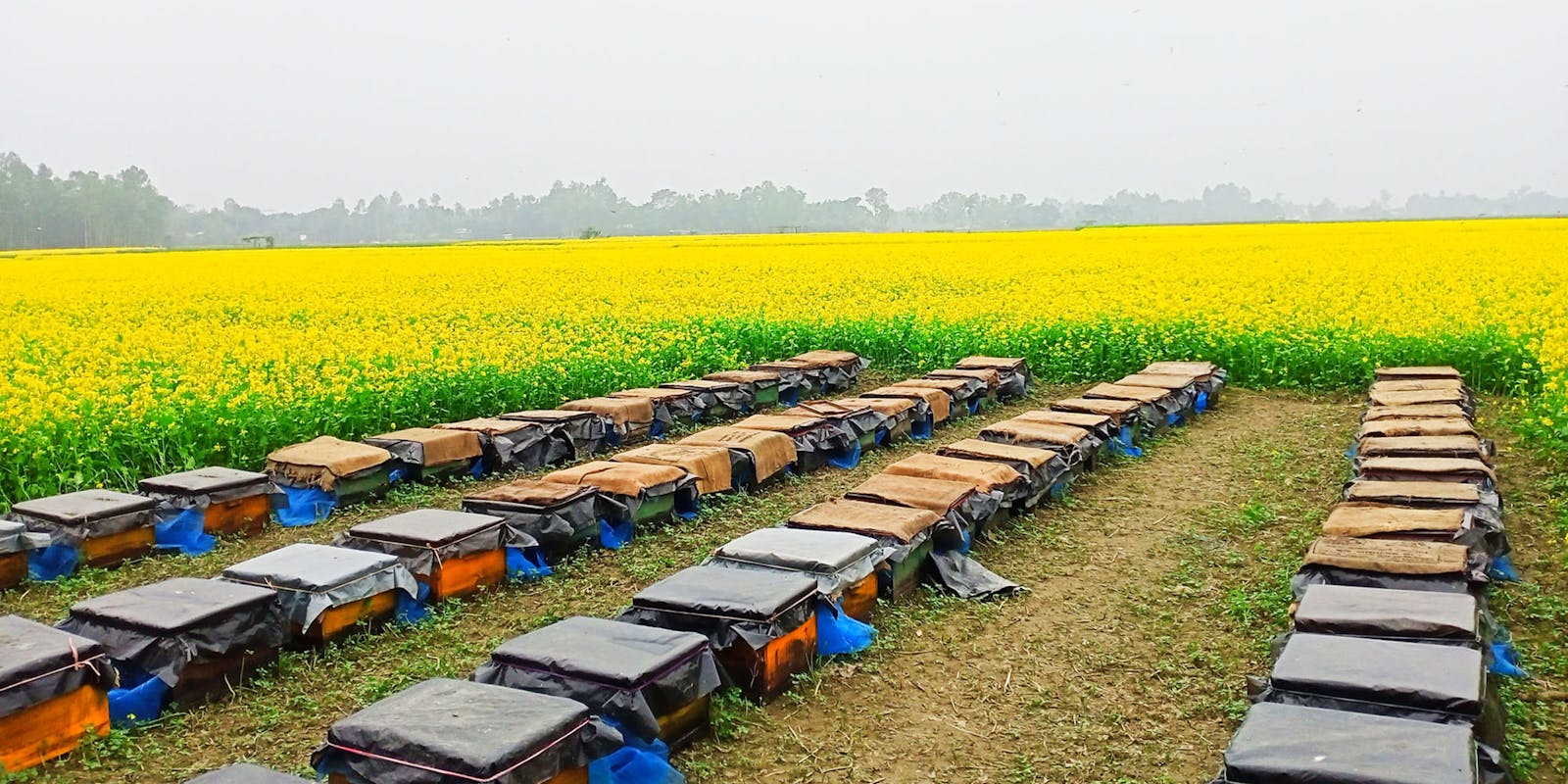Maximizing Your Land: How Many Beehives per Acre for Optimal Honey Production
Are you ready to take your honey production to the next level? In this article, we will delve into the fascinating world of beekeeping density and how it directly impacts the honey yield from your beehives. From calculating the perfect number of beehives per acre to strategically managing multiple hives for optimal results, we will guide you through the process of maximizing your buzz in the most efficient and effective way possible.
Discover the essential factors that influence beehive distribution, learn how to strike a balance between colony health and production rates, and uncover expert techniques for beekeeping success. Whether you're a seasoned beekeeper looking to enhance your honey output or a beginner eager to delve into the world of beekeeping, this article is your comprehensive guide to unlocking the full potential of your apiary. Get ready to transform your beekeeping game and sweeten your harvest with our strategic insights and practical tips!

Determining the Ideal Density: Calculating the Optimal Number of Beehives per Acre
Determining the Ideal Density: Calculating the Optimal Number of Beehives per Acre
When considering the optimal number of beehives per acre for maximizing honey production, several factors come into play. One of the primary considerations is the foraging range of the bees. Bees typically forage within a radius of about 2-3 miles from their hive. This means that the availability of diverse nectar sources within this range is crucial for ensuring a continuous nectar flow to the beehives.
Another important factor to consider is the carrying capacity of the area in terms of nectar and pollen sources. Different locations have varying levels of floral resources, so it's essential to assess the abundance and diversity of flowers in the surrounding area to support the bee colonies adequately.
The climate and local weather conditions also play a significant role in determining the optimal hive density per acre. In areas with harsh winters or extended periods of inclement weather, bee colonies may require more food reserves to survive, affecting the number of hives that can be supported per acre.
It's also important to take into account the management practices of the beekeeper. Proper hive management, including regular inspections, disease prevention, and pest control measures, can influence the optimal hive density per acre. A beekeeper with more time and resources for intensive hive management may be able to sustain a higher number of colonies per acre compared to a more hands-off approach.
Ultimately, finding the ideal balance between hive density, floral resources, weather conditions, and management practices is key to maximizing honey production per acre. By carefully considering these factors and monitoring the health and productivity of the bee colonies, beekeepers can determine the optimal number of beehives per acre to achieve their honey production goals
Factors to Consider: Impact of Environment and Resources on Beehive Distribution
Factors to Consider: Impact of Environment and Resources on Beehive Distribution
Factors such as the surrounding environment and available resources play a crucial role in determining the ideal number of beehives per acre for maximum honey production. Understanding and carefully considering these factors can significantly impact the overall health and productivity of the bee colony.
1. Forage Availability: The abundance and diversity of blooming plants within the foraging range of the beehives are essential for honey production. Bees rely on nectar and pollen from various flowers to create honey, so having a rich source of forage nearby is vital. Depending on the flora in the area, the number of beehives per acre may need to be adjusted to ensure that each colony has an adequate food supply.
2. Climate and Weather Conditions: Different bee species thrive in varying climatic conditions. Some species may require warmer temperatures, while others are more suited to cooler climates. Extreme weather events such as heavy rainfall or prolonged drought can also impact bee activity and honey production. Understanding the local climate patterns and how they affect bee behavior can help in determining the optimal density of beehives per acre.
3. Availability of Water Sources: Bees require water not only for hydration but also for cooling the hive and diluting honey for consumption. Access to a clean and reliable water source near the beehives is crucial for their survival and productivity. The proximity of water bodies or the presence of artificial water stations can influence the number of beehives that can be sustained per acre.
4. Pesticide Use and Pollution: The presence of agricultural chemicals, pesticides, and other pollutants in the surrounding environment can have detrimental effects on bee health. Bees are highly sensitive to toxins, and exposure can lead to colony decline and reduced honey production. Evaluating the impact of pesticide use in the area and taking measures to mitigate exposure can help in determining the appropriate density of beehives per acre.
5. Space and Hive Placement: Proper spacing between beehives is essential to prevent overcrowding, minimize competition, and reduce stress on the bees. Adequate ventilation and orientation of hives can also impact honey production. Factors such as hive design, entrance placement, and hive configuration should be considered when determining the optimal number of beehives per acre.
In conclusion, calculating the ideal number of beehives per acre for optimal honey production requires a comprehensive assessment of various environmental factors and available resources. By considering the impact of the surrounding environment, forage availability, climate conditions, water sources, pesticide use, and hive placement, beekeepers can maximize the productivity of their colonies while ensuring the health and well-being of the bees
Maximizing Honey Yield: Finding the Sweet Spot for Beehive Placement
Maximizing Honey Yield: Finding the Sweet Spot for Beehive Placement
When it comes to maximizing honey yield, the number of beehives per acre plays a crucial role. Finding the sweet spot for beehive placement involves striking a balance between optimal honey production and ensuring the health and productivity of the bee colonies.
The ideal number of beehives per acre can vary depending on various factors such as the availability of nectar sources, local climate conditions, and the specific goals of the beekeeper. In general, beekeepers often aim for around 2 to 4 beehives per acre to achieve a balance between honey production and the well-being of the bees.
Having too few beehives per acre can result in underutilization of the available forage resources and lead to lower honey yields. On the other hand, overcrowding the area with too many beehives can cause competition among the bees for nectar and pollen, potentially leading to stress, resource depletion, and overall decreased productivity.
By strategically placing the beehives in locations with ample floral resources and ensuring proper spacing between hives, beekeepers can help maximize honey production while maintaining the health and vitality of the bee colonies. Regular monitoring of hive populations, honey stores, and foraging behavior can further assist beekeepers in fine-tuning the number of beehives per acre for optimal results.
In conclusion, finding the sweet spot for beehive placement involves careful consideration of various factors to strike the right balance between honey yield and the well-being of the bees. By determining the ideal number of beehives per acre and implementing thoughtful hive placement strategies, beekeepers can maximize their buzz and achieve optimal honey production

Balancing Beehive Density for Healthy Colonies and High Production
Balancing Beehive Density for Healthy Colonies and High Production
One of the key factors to consider when aiming for optimal honey production is the number of beehives you should maintain per acre of land. While maximizing the number of beehives might seem like a straightforward path to increasing honey yield, it's crucial to strike a balance between beehive density, the health of your colonies, and overall production.
When determining how many beehives to maintain per acre, several factors come into play. Firstly, the forage and floral resources available in the surrounding area play a vital role. Bees need access to diverse and abundant nectar and pollen sources to thrive. If there are insufficient resources to support a high number of hives, you risk weakening your colonies and reducing honey production.
Additionally, overcrowding beehives in a limited space can lead to increased competition among bees for limited resources. This competition can result in stressed colonies, lower honey quality, and a higher susceptibility to diseases and pests. Maintaining a moderate beehive density ensures that each colony has ample access to food sources and can function optimally.
On the other hand, having too few beehives per acre may not fully capitalize on the available forage opportunities. In such cases, a low hive density could limit your overall honey production capacity. Finding the sweet spot that balances optimal foraging conditions for bees with efficient use of space is key to maximizing both colony health and honey yield.
Ultimately, the ideal number of beehives per acre will vary depending on factors such as local flora, climate conditions, hive management practices, and bee species. Regular monitoring of hive health, honey production, and forage availability can help you fine-tune your beehive density to achieve the perfect balance for healthy colonies and high honey production
Strategic Management: Techniques for Efficiently Managing Multiple Beehives per Acre
Strategic Management: Techniques for Efficiently Managing Multiple Beehives per Acre
When it comes to maximizing your honey production, the number of beehives per acre plays a crucial role in ensuring optimal results. Efficiently managing multiple beehives per acre requires strategic planning and execution. Here are some key techniques to consider for getting the most out of your beekeeping operation:
1. Spacing and Placement: Proper spacing between beehives is essential to prevent overcrowding and allow bees to forage efficiently. Generally, it is recommended to space beehives at least 10 feet apart to minimize competition among colonies for food sources. Additionally, placing beehives strategically in locations with abundant nectar sources can significantly boost honey production.
2. Hive Inspections and Maintenance: Regular inspections of each beehive are essential for early detection of any issues such as diseases, pests, or queen problems. By staying proactive and addressing issues promptly, you can prevent setbacks that may impact honey production across all your beehives.
3. Seasonal Management: Beehives require different management practices throughout the year to optimize honey production. For example, during the spring when nectar flow is high, it may be beneficial to add honey supers to enable bees to store surplus honey. In contrast, during the winter, providing adequate insulation and food supplies is critical for the survival of the colonies.
4. Record-Keeping: Keeping detailed records of each beehive's performance, including honey yields, hive health, and population strength, can provide valuable insights for making informed management decisions. By actively tracking and analyzing data, you can identify trends, strengths, and areas for improvement within your beekeeping operation.
5. Swarm Prevention and Management: Swarming can result in the loss of bees and decrease honey production. Implementing swarm prevention techniques such as adding swarm traps, creating swarm-resistant hive conditions, and conducting regular hive inspections can help mitigate the risk of swarming and maintain hive populations for optimal honey production.
By incorporating these strategic management techniques into your beekeeping practices and tailoring them to the specific needs of your operation, you can efficiently manage multiple beehives per acre and maximize your honey production potential. Remember that proactive planning, continuous monitoring, and adaptive strategies are key to achieving long-term success in beekeeping